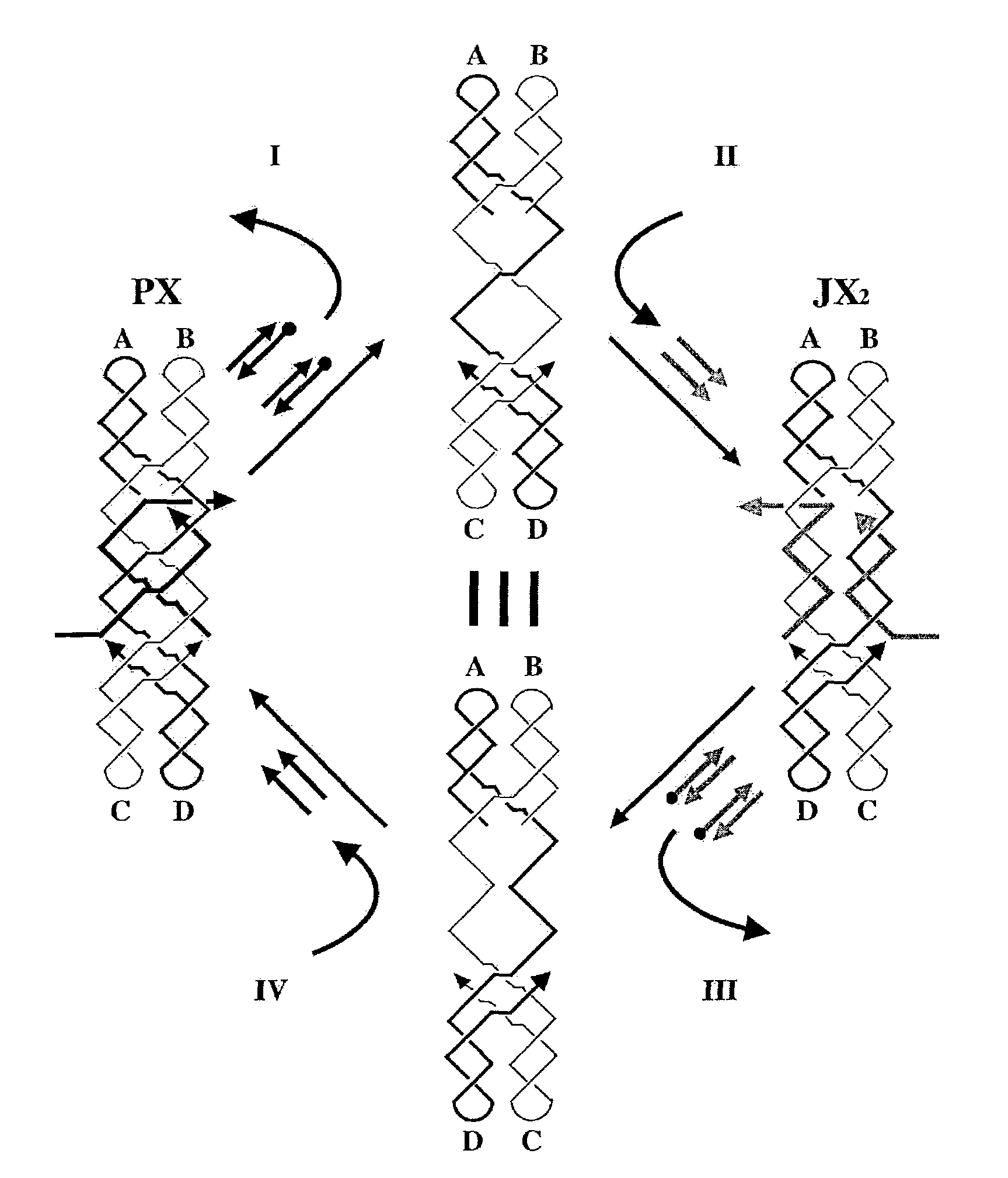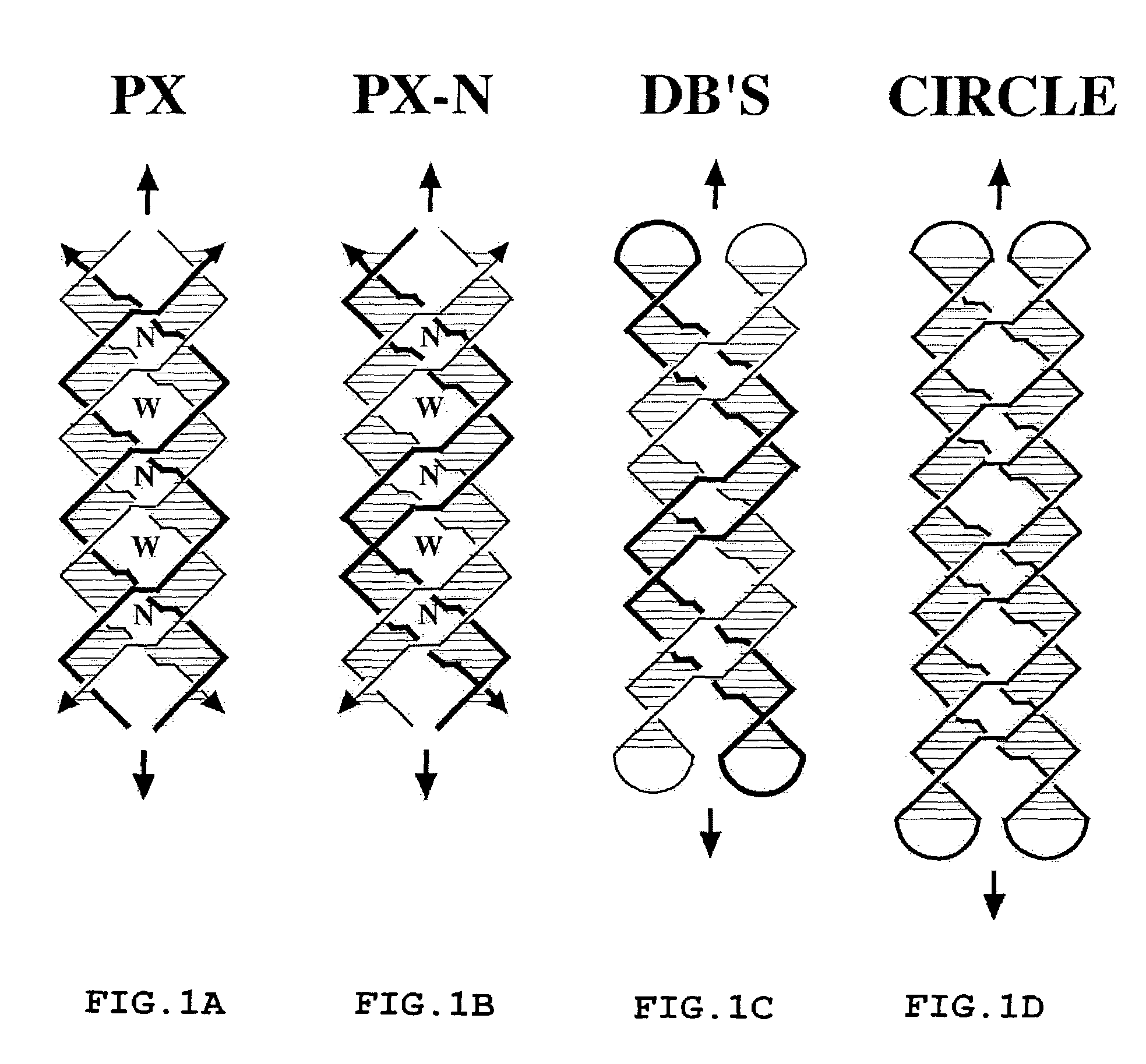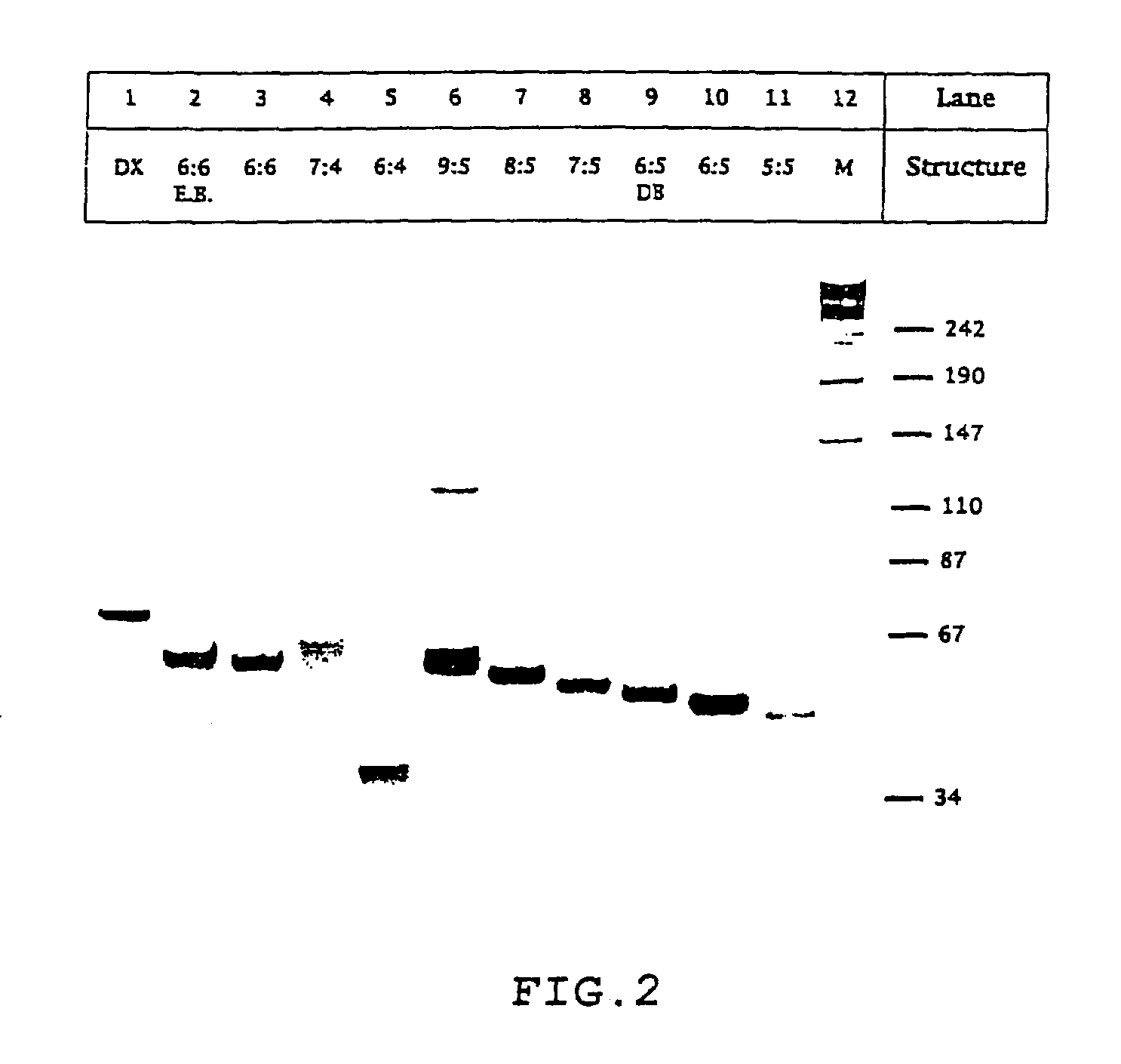Polynucleic acid nanomechanical device controlled by hybridization topology
a technology of polynucleic acid nanomechanical devices and hybridization topology, which is applied in the direction of specific use bioreactors/fermenters, organic chemistry, after-treatment of biomass, etc., can solve the problems of complex structural states, inability to robustly adapt to the system to which it is applied, and only partially stable and predictable products of the yurke et al. devi
- Summary
- Abstract
- Description
- Claims
- Application Information
AI Technical Summary
Problems solved by technology
Method used
Image
Examples
example 1
[0048]Non-denaturing gel electrophoresis shows that the nucleic acid paranemic crossover (PX) molecules of the present invention are stable, forming well-behaved complexes. PX DNA can be produced from closed dumbbells, demonstrating that the molecule is paranemic. Ferguson analysis indicates that the molecules are similar in shape to DNA double crossover molecules. Circular dichroism spectra are consistent with B-form DNA. Thermal transition profiles suggest a premelting transition in each of the molecules. Hydroxyl radical autofootprinting analysis confirms that there is a crossover point at each of the positions expected in the secondary structure. These molecules are generalized Holliday junctions that have applications in nanotechnology. Experiments relating to PX DNA are described below.
Materials and Methods
[0049]Sequence Design: The sequences have been designed by applying the principles of sequence symmetry minimization (Seeman, 1982 and 1990), insofar as it is possible to do...
example 2
[0066]This example demonstrates a robust sequence-dependent rotary DNA device operating in a four-step cycle. It is based on a DNA topological motif, paranemic crossover (PX) DNA (Seeman, 2001; Shen, 1999; and Example 1), and its conversion to a topoisomer (JX2 DNA), in which one end is rotated relative to the other end by 180°.
[0067]PX DNA (FIG. 7A) is a 4-stranded motif wherein two parallel double helices are joined by reciprocal exchange (crossing over) of strands at every point where the strands come together (Seeman, 2001 and Shen, 1999). The JX2 motif (FIGS. 7A and 7B) is a topoisomer of PX DNA that contains two adjacent sites where backbones juxtapose without crossing over. The shade and thickness coding of the strands and labels in FIGS. 7A-7C indicates that the top ends, A and B, are the same in both molecules, but the bottom ends, C and D, are rotated 180°. This rotation is the basis for the operation of the device, which uses strand replacement (Yurke et al., 2000) to int...
PUM
| Property | Measurement | Unit |
|---|---|---|
| temperatures | aaaaa | aaaaa |
| temperature | aaaaa | aaaaa |
| temperature | aaaaa | aaaaa |
Abstract
Description
Claims
Application Information
 Login to View More
Login to View More - R&D
- Intellectual Property
- Life Sciences
- Materials
- Tech Scout
- Unparalleled Data Quality
- Higher Quality Content
- 60% Fewer Hallucinations
Browse by: Latest US Patents, China's latest patents, Technical Efficacy Thesaurus, Application Domain, Technology Topic, Popular Technical Reports.
© 2025 PatSnap. All rights reserved.Legal|Privacy policy|Modern Slavery Act Transparency Statement|Sitemap|About US| Contact US: help@patsnap.com



